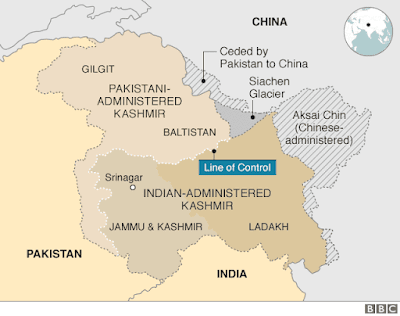The Soviet Union's war with Japan is one of the less well-known aspects of the Second World War. I was drawn to the subject back in 2013 by a couple of books on The Nomonhan Incident of 1939 and built the armies in 15mm. The title is misleading because these were army level encounters between the Japanese Kwantung Army and the Soviets commanded by the as then relatively unknown Zhukov. The Japanese were defeated, suffering 25,000 casualties.
That conflict forms the starting point for Charles Stephenson's 'Stalin's War on Japan: The Red Army's Manchurian Strategic Offensive Operation 1945. It is currently available as a Kindle book for a bargain price at £1.99.
The common understanding is that Stalin invaded the Japanese puppet state of Manchukuo on 9 August 1945, 'scenting easy meat' as J.F.C Fuller described it. In fact, he was encouraged to do so by the Allies, who saw it as a way to weaken Japan and encourage an early surrender. As US Secretary Stimpson put it, 'Russian entry will have a profound military effect in that almost certainly it will materially shorten the war and thus save American lives.' He also understood that Stalin would only undertake the project if it suited his own ambitions in the region, mainly about undoing the losses suffered by Tsarist Russia in the Russo-Japanese War. Roosevelt was happy to concede these as a price worth paying, recognising that the US was in any case not in a position to stop him. The US did more than not stop him. They supplied him with many small warships, which played an important part in the naval operations, and lend-lease armoured vehicles pop up throughout the narrative.
The ill-defined border that caused the Nomonhan Incident continued as a cause of friction throughout the war. Soviet sources list 1,850 incidents between 1932 and 1945. Although the Soviet-Japanese Neutrality Pact of 13 April 1941 did reduce tension and allowed the Soviets to shift significant numbers of troops to face the Germans in the battles before Moscow later that year.
Despite their commitments in the Pacific, by 1945 the purely Japanese Kwantung Army consisted of 713,000 personnel divided into thirty-one infantry divisions, plus nine independent infantry brigades, two tank brigades and one special purpose brigade. Equipment-wise, these forces possessed 1,155 light tanks, 5,360 guns and 1,800 aircraft. In addition, there were some 300,000 Manchukuoan troops ‘of questionable combat value, but capable of guarding lines of comunications and performing service duties.'
After this context, the author describes the Soviet battle plan based on the Russian/Soviet concept of maskirovka: the totality of measures taken to deceive an enemy. Many troops shifted from Germany thought they were going home, instead of being shifted the huge distances to the Far East. The offensive into Manchukuo was to be conducted across three active fronts amounting to some 2,700km. Together there would be nine major coordinated strikes aiming to penetrate to a maximum depth of around 800km. The object of the exercise, as the commander of the First Far Eastern Front, Marshal Kirill Meretskov, later put it, was to ‘cut the Kwantung Army into pieces’.
 |
| Manchuria Operation map (Tazadeperladerivative work: Rowanwindwhistler) |
This wasn't simply the Russian steamroller either. Infiltration tactics were extensively used to breakdown the Japanese fortifications, as well as bypassing them where possible. The tactical expertise learned in the war against Germany was deployed with lethal effect on an outdated Japanese army. However, the fortifications had a number of key weaknesses, primarily being situated too far forward with insufficient depth and camoflage. The Japanese doctrine of attack was the driver for this design. Soviet engineers played an important role, using innovative techniques to get through the terrain.
The terrain was horrendous with mountains, deserts, marshland and rivers to be crossed. High temperatures and water shortages were reported by many troops, 'The temperature was 40 Centigrade … The Shermans’ armor was like a burning skillet.' There was a type of thorn called the taiga. These prickly barriers could, literally, tear the clothes off inexperienced people in a few minutes and pierce the soles of boots.
The book takes the reader through each of the stages of the offensive on each front. I am a big fan of David Glantz's work on Soviet campaigns, but the detail can be very hard work. Stephenson has made large scale and complex operations quite readable, with lots of interesting stories to break up the big picture. It was this campaign that featured the well known picture and models of the commander of the 11th Tank Regiment, Colonel Sueo Ikeda, waving a samurai sword and Japanese flag from the turret, during a counter attack.
On the impact of the offensive there are basically two schools of thought. Those who conclude that the Soviet invasion of Manchukuo was decisive in the Japanese surrender decision, and those who consider the nuclear attacks, particularly the first, were the more important. Either way, this is an excellent study of the campaign and its wider impact. Not least the Soviet Korean contingent that included a Captain Jin Zhi-cheng, history records him as Kim Il Sung. And the transfer of significant quantities of captured Japanese equipment to the Chinese Communist forces including 3,700 guns, mortars and grenade launchers, 600 tanks, 861 aircraft, about 1,200 machine guns, plus the contents of almost 680 military depots.
This book was a good excuse to dust down my armies for the earlier conflict. The Japanese forces were little changed and the Soviets kept most of the earlier equipment. I really need some Shermans, DUKWs and T34s, but I'll try and restrain myself!
 |
| Japanese Infantry |
 |
| Japanese HaGo tanks attacking Soviet infantry |















































